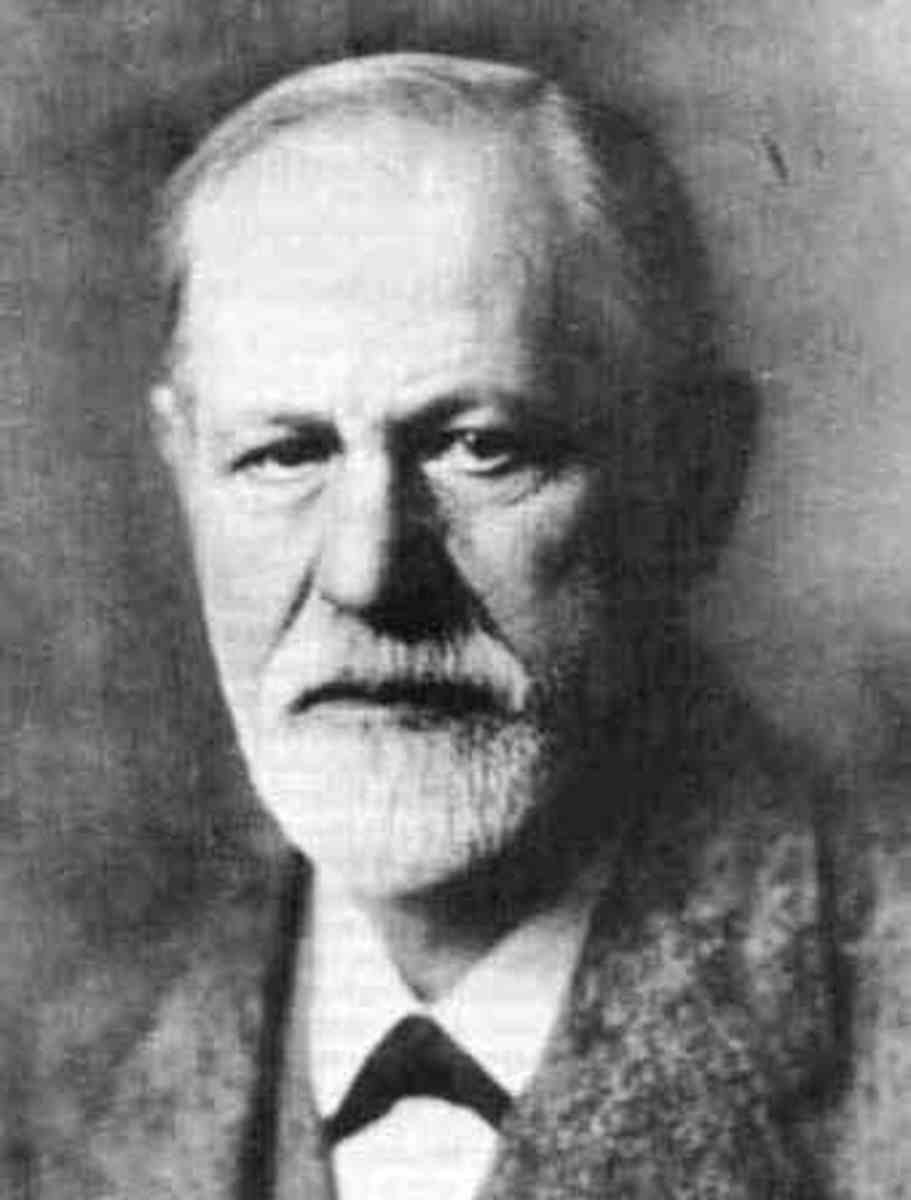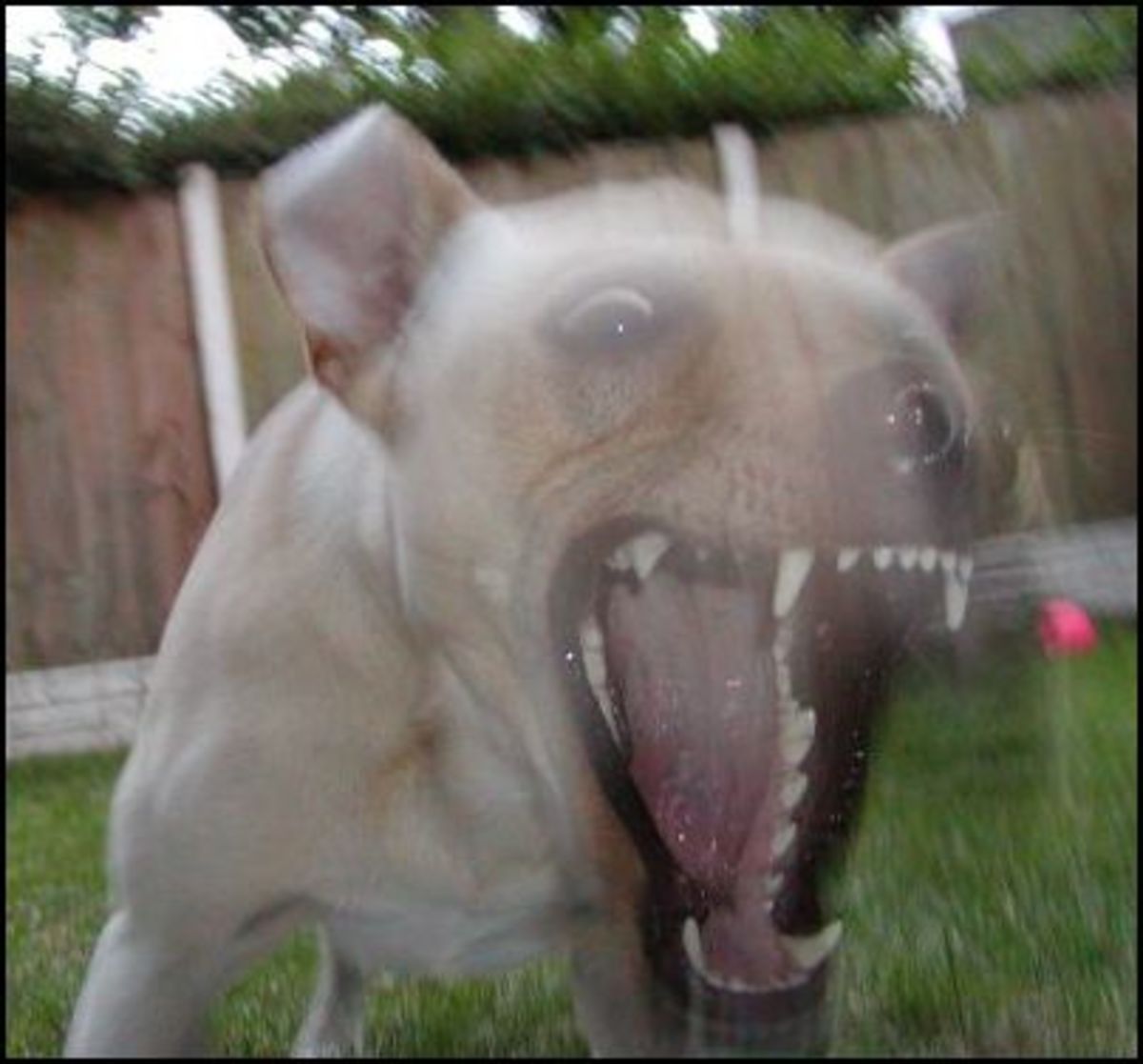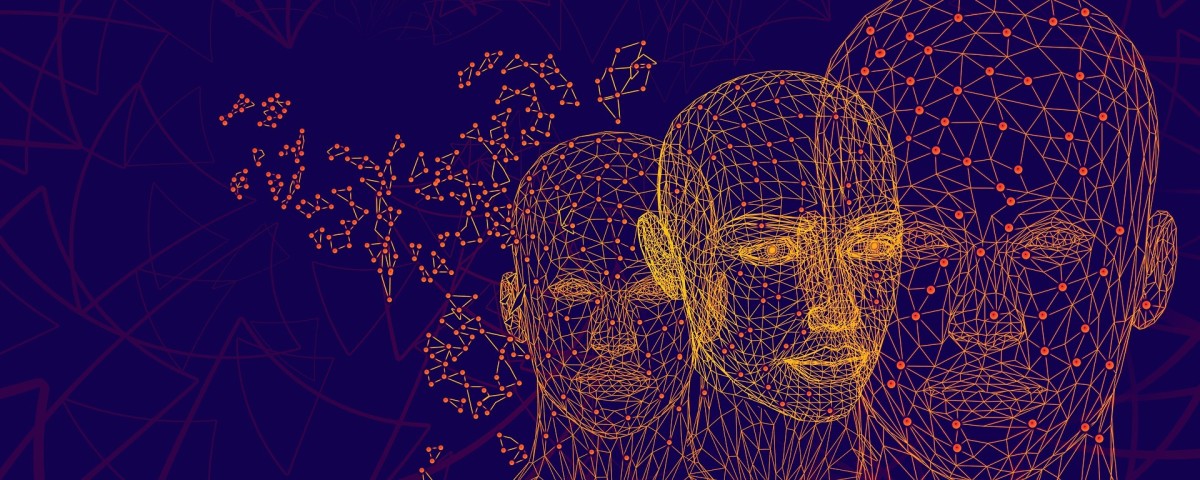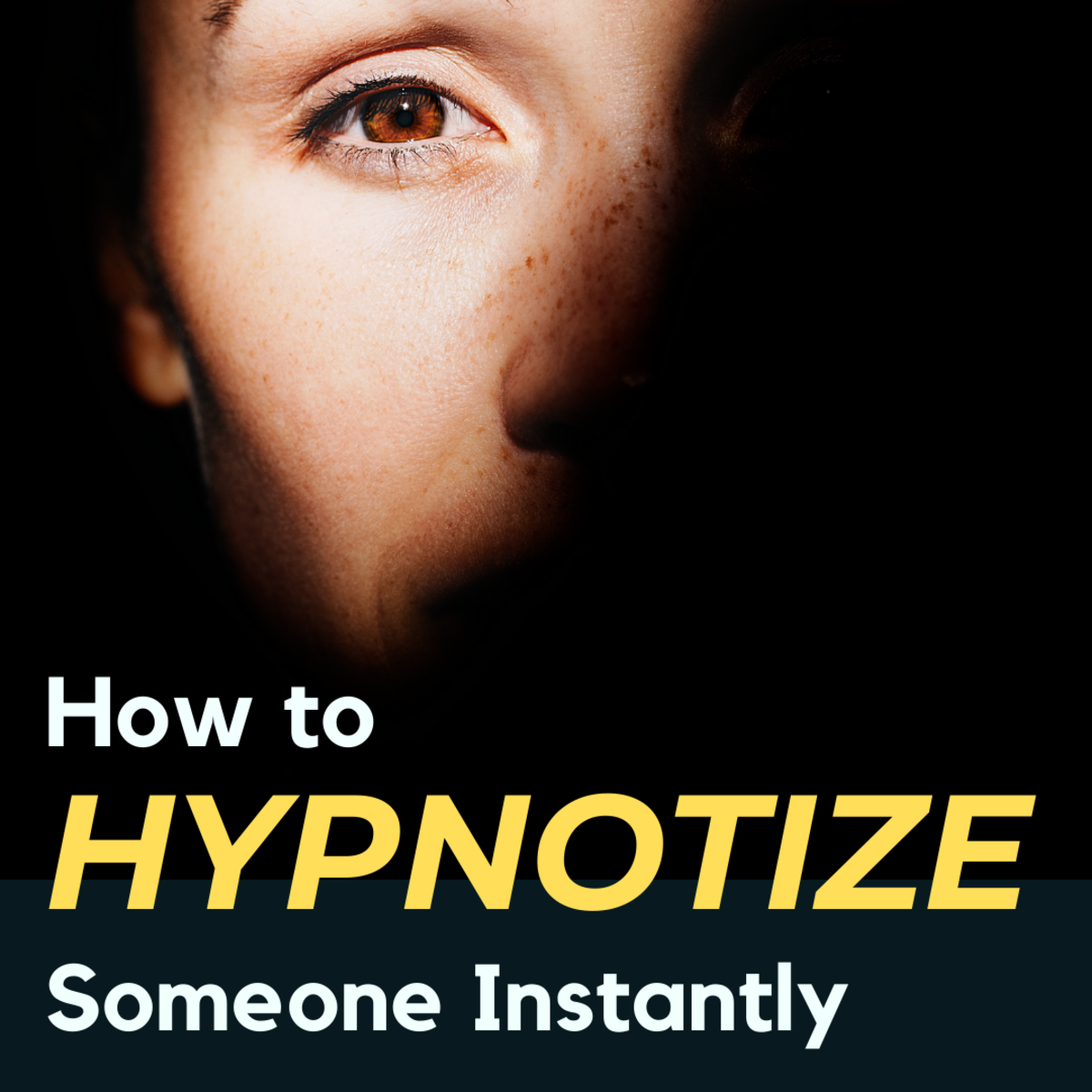Sinclair: General Psychology Collection of Study Guides
Chapter One
- Define the term Psychology
- The scientific study of behavior and mental process.
- Identify the contributions of Wilhelm Wundt to the field of Psychology.
- Founded psychology as an experimental science
- Established first psychology research laboratory (University of Leipzig)
- Researched cultural psychology and developmental psychology
- Identify the founder of Psychoanalysis.
- Sigmund Freud
- Identify the fields which contributed to the development of the field of Psychology.
- Structuralism- Early school of psychology that emphasized the most basic components of structures, or conscious experiences.
- Functionalism- Early schools of psychology that emphasized studying the purpose or function of behavior and mental experiences.
- Psychoanalysis- Personality theory and form of psychology that emphasizes the role of the unconscious factors in personality and behavior.
- Behaviorism- School of psychology and theoretical viewpoint that emphasizes the study of observable behaviors, especially as they pertain to the process of learning.
- Humanistic psychology- School of psychology and theoretical view point that emphasizes each person’s unique potential for psychological growth and self-direction.
- Identify the founder of behaviorism.
- John B. Watson
- B.F. Skinner
- Identify the people associated with the development of the field of humanistic psychology.
- Carl Rogers
- Abraham Maslow
- Discuss the basic principles of humanistic psychology. Describe the factors this theory believes are important to understanding behavior.
- Motivation of people to grow psychologically
- Influence of interpersonal relationships on a person’s self-concepts
- The importance of self-direction in striving to reach one’s potential
- Explain the principles of the psychodynamic perspective and how it explains behavior.
- Emphasizes the importance of unconscious influences
- Early life experiences
- Interpersonal relationships in explaining the underlining dynamics of behavior or in treating people with psychological problems
- Describe the focus of the cognitive perspective and how thoughts influence behavior and emotions.
- Human thinking, memory, and perception could be understood in terms of an information –processing model.
- Discuss the focus of the biological perspective and the techniques used to understand the functions and structures of the brain.
- Emphasizes the studying the physical bases of human and animal behavior, including the nervous system, endocrine system, immune system, and genetics.
- Neuroscience refers to the study of the nervous system especially the brain
- Describe the field of cross cultural psychology.
- Branch of psychology that studies the effects of culture on behavior and mental process.
- Americans work harder alone than in a group
- Chinese work harder in a group than they do alone
- Discuss the fields of forensic and industrial organizational psychology and, identify the topics study by this area of psychology.
- Forensic psychology- Applies psychological principles and techniques to legal issues; like assessment and treatment of offenders, mental competency to stand trial, child custody, and eyewitness testimony.
- Industrial/Organizational psychology- is concerned with the relationship between people and work; areas included in this are job analysis, personnel selection and training, worker productivity, job satisfaction, leadership, and group behavior within organizations.
- Identify the steps in the scientific method.
- Formulate a testable hypothesis
- Design the study and collect data
- Analyze the data and draw conclusions
- Report the findings
- Identify the types of descriptive research methods and discuss their goals and techniques.
- Naturalistic Observation (The science of people and animal watching) - The systematic observation and recording of behaviors as they occur in their natural setting.
- Case Studies (Details, Details, Details) – An intense study of a single individual or small group of individuals.
- Surveys – A questionnaire or interview designed to investigate the opinions, behaviors, or characteristics of a particular group.
- Identify the goals of the experimental research method.
- Demonstrate the cause and effect relationship between changes in one variable and the effect that is produced on another variable.
- Identify a double blind study.
- An experimental control in which neither the participants nor the researchers interacting with the participants are aware of the group or condition to which the participants have been assigned. ( The Ginkgo Biloba Experiment)
- Describe why a control group is used in a study.
- The control group is used as a baseline for the experiment
- Describe correlational research and identify its limitations.
- A research strategy that allows the precise calculation of how strongly related two factors are to each other. Correlation coefficients are usually associated with measuring a linear relationship.
- Identify the concept of informed consent.
- The psychologists must inform the participants of the purpose of the research, including anything that might affect the person’s willingness to participate. It is limited to Positive and negative correlation.
Chapter Two
- Define the term neuron and describe its parts and functions.
- Neuron- Highly specialized cell that communicates information in electrical and chemical form; a nerve cell
- Describe the action potential.
- Action Potential- A brief electrical impulse by which information is transmitted along the axon of a neuron.
- Discuss the lock and key concept of how a neurotransmitter fits into a post synaptic neuron.
- Each neurotransmitter has its own shape and that shape must match the shape of the post synaptic neuron.
- Describe the functions of the neurotransmitters: acetylcholine, dopamine, serotonin and GABA. Identify any disorders associated with an imbalance of these neurotransmitters.
acetylcholine
Learning, memory
Muscle contractions
Alzheimer’s disease
dopamine
Movement, Thought Processes, Rewarding Sensations
Parkinson’s disease, Schizophrenia, Drug Addiction
serotonin
Emotional states, Sleep, Sensory perception
Depression
GABA
Inhibition of brain activity
Anxiety disorders
- Describe the effects of antidepressants on the neurotransmitter serotonin.
- Antidepressant drugs increase the availability of serotonin in certain brain regions
- Describe the parts of the autonomic nervous system and their functions.
- Involuntary functions like heartbeat, blood pressure, breathing, and digestion.
- Describe the functions of the cerebellum, reticular formation, midbrain, temporal lobe, occipital lobe, parietal lobe, hippocampus, amygdala, and hypothalamus.
- Cerebellum- responsible for muscle coordination
- Reticular formation- Regulate attention, arousal, and sleep
- Midbrain- processes auditory and visual sensory information
- Temporal lobe- primary receiving area for auditory information
- Occipital lobe- primary receiving area for visual information
- Parietal lobe- processes somatic sensations
- Hippocampus-involved in learning and forming new memories
- Amygdala- Involved in memory and emotional responses especially fear
- Identify the disorder associated with the degeneration of the myelin sheath.
- Myelin- is an insulating layer that forms around nerves, including those in the brain and spinal cord. It is made up of protein and fatty substances. The purpose of the myelin sheath is to allow impulses to transmit quickly and efficiently along the nerve cells. If myelin is damaged, the impulses slow down. This can cause diseases such as multiple sclerosis.
Chapter Three
1) Identify the terms sensation and perception.
a) Sensation- The process of detecting a physical stimulus; light, sound, heat, pressure
b) Perception-The process of integrating, organizing, and interpreting sensations.
2) Discuss the process of transduction.
a) Transduction- The process by which a form of physical energy is converted into a coded neutral signal that can be processed by the nervous system
3) Describe the effects of subliminal messages on behavior.
a) Subliminal messages do not affect behavior
4) Identify the concept: sensory adaption. Give an example of this concept.
a) The decline in sensitivity to a constant stimulus
b) Overwhelmed by smell of onions and garlic immediately, but not over a period of time
5) Identify the sensory receptors for vision and identify the kind of stimulus they process.
a) rods and cones (photoreceptors)
b) light, brightness, and color
6) Identify the symptoms of presbyopia.
a) presbyopia is the loss of the eye's ability to change its focus to see objects that are near
b) The need to hold reading material at arm's length.
c) Blurred vision at a normal reading distance.
d) Headaches or fatigue from doing close work.
7) Identify the role of the visual cortex in the visual process.
a) Color and shape
8) Discuss the different types of color blindness.
a) Red-green color blindness- can’t tell the difference between red and green
9) Identify the stimuli for our perception of sound, smell and taste.
a) Loudness, pitch, and frequency
10) Identify the factors that affect our perception of pain.
a) psychological, social and/or situational
11) Identify the function of the vestibular system.
a) balance
12) Discuss the contributions of the Gestalt psychologists to the field of perception.
a) We perceive whole objects or figures rather than isolated bits and pieces of sensory information.
13) Identify the following perceptual principles: figure ground, similarity, closure, good continuation, and proximity.
a) figure ground- automatically we separate the elements of perception into the feature that clearly stands out and its less distinctive background
b) similarity- perceive objects similar as one
c) Closure- fill in gas of an incomplete image
d) good continuation-group elements that follow in the same direction
e) proximity-perceive object close together as one unit
14) Identify the depth perception cues: linear perspective and aerial perspective.
a) Linear perspective-Parallel lined seem to meet in the distance.
b) Aerial perspective- faraway objects appear hazy or slightly blurred by the atmosphere
15) Identify the term perceptual constancy and be able to recognize examples of this concept.
a) Perceptual constancy- the tendency to see familiar objects as constant and unchanging despite changes in sensory input.
16) Identify the Muller Lyer Illusion.
a) Muller Lyer Illusion-A famous visual illusion involving the misperception of the identical length of two lines one with arrows pointed inward and one with arrows outward .
17) Describe the role of the suprachiasmatic nucleus in the production of melatonin.
a) Special photoreceptor cells in the retina send signals about light status to the suprachiasmatic nucleus (SCN) in the hypothalamus of the brain. These signals are then transmitted to the pineal gland. Melatonin generation by the pineal gland, which peaks during the nighttime hours, induces physiological changes that promote sleep, such as decreased body temperature and respiration rate.
b) Governs the sleep and wake cycle
18) Identify the sensor receptors for sound and their location.
a) Hair cells in cochlea
19) Identify the causes and symptoms of nerve deafness.
a) Damage to the hair cells or auditory nerve can result in nerve deafness which cannot be helped by hearing aids. Exposure to loud noise can cause nerve deafness
20) Identify the concept absolute threshold.
a) An absolute threshold is the smallest amount of a stimulus that a person can detect, including sound, sight and smell.
Chapter Four
1) Identify the role circadian rhythms play in our bodily processes.
a) Circadian rhythms are a cycle that is 24 hours long and fluctuates daily
2) Discuss the effects of sunlight on melatonin.
a) When the sun is up melatonin levels are suppressed
b) When the sun is down the melatonin is produced
3) Describe the characteristics of REM sleep.
a) Rapid eye movement
b) Suppression of voluntary muscle activity
c) Dreaming occurs
4) Identify the effects of sleep deprivation.
a) Micro sleeps
b) Disruption of mood, mental abilities, reaction time, perceptual skills, and complex motor skills
5) Describe the characteristics of sleep thoughts.
a) Sleep thoughts are what people think about 50 to 60% of the time when they are in stage 2, 3, or 4 of the sleep stages. Sleep thoughts normally are centered on some event or issue that a person was concerned about during the day.
b) Sleep thoughts are not actual dreams because they lack the action-packed quality of a genuine dream.
6) Discuss the activation synthesis model of dreaming.
a) The theory that brain activity during sleep produces dream images (activation) which are combined by the brain into a dream story (synthesis).
7) Identify the symptoms of sleep apnea and narcolepsy.
a) Sleep apnea-sleeper’s air way becomes narrowed or blocked causing very shallow breathing or repeated pauses in breathing.
b) narcolepsy-experiencing overwhelming bouts of excessive daytime sleepiness and brief uncontrollable episodes of sleep, called sleep attacks or micro sleeps
8) Identify the sleep disorders known as parasomnias.
a) Parasomnias- when sleep and waking states overlap or blend together
9) Define the phenomena known as hypnosis.
a) Hypnosis- a cooperative social interaction in which the hypnotized patient responds to the hypnotist’s suggestions with changes in perception, memory, and behavior.
10) Discuss the effects of meditation.
a) Altered state of focused attention
b) Heightened awareness
c) Decreased heart rate
d) Lower blood pressure
e) Change in brain waves
11) Identify the term psychoactive drugs.
a) Psychoactive drugs- chemical substances that can alter arousal, mood, thinking, sensation, and perception.
12) Identify how alcohol is classified.
a) Depressant
13) Identify types of opiates and their effects.
a) Opium, morphine, heroin, methadone, oxycodone, OxyContin, Vicodin, Percodan, Demerol, and Fentanyl
b) Rush of euphoria, rapid high, and feelings of contentment, peacefulness, and warmth
14) Identify the most commonly abused substance in the world.
a) Marijuana
15) Discuss the effects of Marijuana.
a) Sensory disorientation that resembles a mild psychedelic experience
b) Sense of well being
c) Mild euphoria
d) Dreamy state of relaxation
16) Identify Freud’s view of dreaming. (Dreams purposes and the meaning of dream symbolism)
a) Repressed urges and wishes surface in dream imagery
b) Wish fulfillment is the purpose of every dream
17) Identify the purposes of sleep and why sleep patterns change over the life cycle.
a) The purpose of sleeping is to provide a period of inactivity for tissue growth and repair. Sleep also allows the brain to consolidate and organize memories without any interruption from a person’s senses.
b) Young children and infants sleep much more than older adults so their body’s resources can be mobilized for tissue repairs and growth. As people age, they stop growing and because they no longer need as much sleep. Children also tend to expend more energy than older adults and thus need more time asleep to recover their energy for the next day.
Chapter 5
1) Identify the person who discovered classical conditioning.
a) Ivan Pavlov
2) Identify the following classical conditioning principles: UCS, UCR, CS, CR and be able to recognize examples of these concepts.
a) UCS- The natural stimulus that reflexively elicits a response without prior learning
b) UCR-The unlearned reflexive response that is elicited by an unconditioned stimulus
c) CS- A formerly neutral stimulus that acquires the capacity to elicit a reflexive response
d) CR-The learned reflexive response to a conditioned stimulus
3) Identify: stimulus discrimination, stimulus generalization and extinction. Be able to recognize examples of these concepts.
a) stimulus discrimination- The occurrence of a learned response to a specific stimulus but not to other similar stimulus
b) stimulus generalization- The occurrence of a learned response not only to the original stimulus but to other similar stimulus as well
c) extinction-The gradual weakening and eventual disappearance of conditioned behavior
4) Describe negative reinforcement, punishment and, primary reinforce. Give examples of each of these concepts.
a) Negative reinforcement- A situation in which a response results in the removal of, avoidance of, or escape from a punishing stimulus, increasing the likelihood that the response will be repeated in similar situations.
b) Punishment- the presentation of a stimulus or event following a behavior that act to decrease the likelihood of the behavior being repeated
c) primary reinforce- a stimulus or event that is naturally or inherently reinforced for a given species, such as food, water, or other biological necessities
5) Describe the conditions under which punishment is most effective.
a) Immediately following the behavior
b) Consistently rather than occasionally
6) Describe the factors BF Skinner and the behavioral perspective believe determine behavior?
a) Environmental stimulus
b) A person’s reinforcement history in that environment
7) Identify the reinforcement schedules and give an example of each type of schedule.
a) (FR) fixed ratio- reinforcement occurs after a fixed number of responses
b) (VR) variable ratio- reinforcement occurs after an average number of responses; varies from trial to trail
c) (FI) fixed interval- a reinforce is delivered for the first response after the preset time interval has elapsed
d) (VI) variable interval-reinforcement occurs for the first response after an average amount of time has elapsed; varies from trial to trail
8) Discuss the results of the Bobo doll experiment.
a) Children are more likely to copy negative adult behavior if they do not see the adult punishes, especially if the adult was rewarded
9) Describe the results of the Little Albert experiment.
a) Baby albert would reach for the white rat and then a loud noise would be made to scare him eventually the white rat scared Albert
10) Define classical and operant conditioning.
a) Classical conditioning-deals with reflexive behaviors that are elicited by a stimulus and results from learning an association between two stimuli
b) operant conditioning- The basic learning process that involves changing the probability that a response will be repeated by manipulating the consequences of that response
Chapter 6
1) Define memory.
a) Memory-The mental processes that enable you to retain and retrieve information over time.
2) Describe the memory processes of storage, encoding and retrieval.
a) Storage- process of retaining information in memory so that it can be used later
b) Encoding- process of transforming information into a form that can be entered and retained by the memory system
c) Retrieval- recovery of the stored information so that we are consciously aware of it
3) Discuss the stage model of memory.
4) Describe the characteristics of sensory memory.
a) Environmental information is registered
b) Large capacity for information
c) Duration: 1/4 second to 3 seconds
5) Discuss the characteristics of maintenance and elaborative rehearsal.
a) Maintenance rehearsal- The mental or verbal repetition of information in order to maintain it beyond the usual 20 second duration of short-term memory
b) Elaborative rehearsal-Rehearsal that involves focusing on the meaning of information to help encode and transfer it to long-term memory
6) Identify the capacity for short term and long term memory.
a) Short term- limited capacity
b) Long term- Unlimited capacity
7) Describe the effect chunking has on short term memory.
a) Chunking- Increasing the amount of information that can be held in short-term memory by grouping related items together into a single unit, or chunk
8) Discuss episodic, procedural and semantic memory.
a) Episodic memory- Category of long-term memory that includes memories of particular events
b) Procedural memory-Category of long-term memory that includes memories of different skills, operations, and actions
c) Semantic memory- Category of long-term memory that includes memories of general knowledge, concepts, facts, and names
9) Describe how retrieval cues can improve memory.
a) Retrieval Cues- A clue, prompt, or hint that helps trigger recall of a given piece of information stored in long-term memory
10) Describe the difference between recall and recognition.
a) Recall- A test of long-term memory that involves retrieving information without the aid of retrieval cues; also called free recall
b) Recognition- A test of long-term memory that involves identifying correct information out of several possible choices
11) Identify the serial position effect.
a) Serial position effect- The tendency to remember items at the beginning and end of a list better than items in the middle
12) Discuss the reasons we forget. ( a failure to encode, proactive and retroactive interference)
a) Encoding failure- The inability to recall specific information because of insufficient encoding of information for storage in long-term memory
b) Retroactive interference- Forgetting in which a new memory interferes with remembering an old memory; backward-acting memory interferences.
c) Proactive interference- Forgetting in which an old memory interferes with remembering an old memory; forward -acting memory interferences.
13) Describe the conclusions of Elizabeth Loftus and eyewitness testimony.
a) Post-event exposure to misinformation can distort the recollection of the original event by eyewitnesses.
14) Describe how the misinformation effect leads to memory distortions.
a) Misinformation effect- A memory distortion phenomenon in which a person’s existing memories can be altered if the person is exposed to misleading information.
Chapter Seven
1) Define the term concept.
a) A mental category of objects or ideas based on properties they share
2) Define the terms informal, formal and natural concepts and give an example of each.
a) Informal – Used to assess the believability of a conclusion based on evidence. Misuse of mental shortcuts
b) Formal - A mental category that is formed by learning the rules or features that defines it. Clear cut
c) Natural concept- A mental category that is formed as a result of everyday experience. Not always sharply defined
3) Give an example of the trial and error problem solving method.
a) Trying to develop a recipe for spaghetti sauce
4) Define the term heuristic.
a) Heuristic- A problem-solving strategy that involves following a general rule of thumb reduces the number of possible solutions.
5) Define functional fixedness and give an example.
a) Functional fixedness- The tendency to view object as functioning only in their usual or customary ways.
6) Define the term mental set.
a) Metal set- The tendency to persist in solving problems with solutions that have worked in the past.
7) Define availability heuristic and give an example.
a) Availability heuristic- A strategy in which the likelihood of an event is estimated on the basis of how readily available other instances of the event are in memory. A lottery winner being shown on TV makes other people think they are more likely to win then they actually are.
8) Describe how confirmation bias affects our beliefs.
a) People tend to visit websites that support their beliefs and avoid websites that show the opposite is true.
9) Define language.
a) Language- A system for combining arbitrary symbols to produce an infinite number of meaningful statements.
10)Describe the characteristics of language known as displacement.
a) Communicating meaningfully about ideas, objects, and activities that are not physically present.
11)Describe the finding of the research on animals’ ability to use language.
a) Certain animals can use and respond to language like chimps and birds.
12)Discuss the findings of Psychologist Lewis Terman regarding high IQ and life success.
a) High IQ score along with certain personality factors like emotional maturity and goal orientation lead to a successful life.
13)Describe the WAIS’ verbal and performance IQ’s and identify the abilities measured by the two types of IQ’s. Identify a “normal IQ score on the WAIS.
a) Verbal- vocabulary, comprehension, general information
b) Performance- nonverbal, missing parts in a picture, arranging pictures to tell a story, arranging blocks to match a pattern.
c) 100
14)Identify the types of IQ’s identified by Howard Gardner.
a) Analytic
b) Creative
c) Practical
15)Discuss how genetics and environment influence intelligence.
a) Environmental factors influence how close people come to realizing their genetic potential
b) The genetic range of intellectual potential is influence by many genes not by one single gene
16)Describe how stereotype threat affects performance.
a) Stereotype threat- It’s a response that occurs when members of a group are aware of a negative stereotype about their group and fear they will be judged in terms of that stereotype.
17)Define the term neurodiversity.
a) The idea of neurodiversity was developed by autistic people.. According to them autistic people are not disordered. They have a different sort of order. Their brains are differently wired. They think differently. They do not want to be cured. They want to be understood.
Chapter Eight
1) Define motivation.
a) Motivation- The biological, emotional, cogitative, or social forces that activate and direct behavior
2) Define the term persistence as it applies to motivation.
a) Firm or obstinate continuance in a course of action in spite of difficulty or opposition
3) Describe the drive theory, the arousal theory, the humanistic theory and the incentive theory of motivation and give an example of each.
a) Drive- The view that behavior is motivated by the desire to reduce internal tension caused by unmet biological needs
b) Arousal-The view that people are motivated to maintain a level of arousal that is optimal—neither too high or too low
c) Humanistic-The view that emphasizes the importance of psychological and cognitive factors in motivation, especially the notion that people are motivated to realize their personal potential.
d) Incentive- The view that behavior is motivated by the pull of external rewards, such as goals
4) Describe the concept of homeostasis.
a) Energy Homeostasis- The long-term matching of food intake to energy expenditure.
5) Define the term sensation seeker.
a) Sensation Seeker- The degree to which an individual is motivated to experience high levels of sensory and physical arousal associated with varied novel activities.
6) Identify the hormone associated with an increase in appetite.
a) Ghrelin
7) Describe how the positive incentive value affects eating behavior.
a) Positive incentive value- In eating behavior, the anticipated pleasure of consuming a particular food; the expectation of pleasure or satisfaction in performing a particular behavior.
8) Define the set point theory.
a) Set-point theory- Theory that proposes that humans and other animals have a natural or optimal body weight, called the set-point weight, that the body defends from becoming higher or lower by regulating feelings of hunger and body metabolism.
9) What percentage of Americans is considered obese and or overweight?
a) Overweight- more than 1/3
b) Obese- 72 million people 1/3
10)Describe the cafeteria diet effect.
a) Cafeteria diet effect- The tendency to eat more when a wide variety of palatable foods is available.
11)Describe the role genetics plays in obesity.
a) People with a family history of obesity are more likely to become obese
12)Discuss Maslow’s theory of motivation.
a) Maslow believed that people are motivated to satisfy their needs in order of importance (from the bottom of the pyramid up)
13)Identify the qualities of intrinsic and extrinsic motivation.
a) Intrinsic motivation-The desire to engage in tasks that the person finds inherently satisfying and enjoyable
b) Extrinsic motivation- Consists of external influences on behavior, such as rewards, social evaluations, rules, and responsibilities.
14)Describe the qualities of achievement motivation.
a) Achievement motivation-The desire to excel, succeed, or outperform others at some tsk.
15)Describe the importance of relationships and social context to collectivistic cultures.
a) In collectivistic cultures people find it more acceptable to show pride in the achievements of others.
16)Describe the relationship between emotional and physical arousal.
a) Physical arousal associated with intense emotion helps gear people up to take action
17)Identify the components of emotion.
a) Emotion- A complex psychological state that involves a subjective experience, a physiological response, and a behavioral or expressive response.
Chapter Nine
1) Define Developmental Psychology.
a) Developmental Psychology- The branch of psychology that studies how people change over the lifespan.
2) Describe the nature/nurture issue as it relates to human development.
a) The genes from our biological parents and our environment influence how, when, and whether we reach our potential.
3) Define the term alleles.
a) Alleles- One of the different forms of a particular gene.
4) Define genotype and phenotype.
a) Genotype- The genetic makeup of an individual organism
b) Phenotype- The observable traits or characteristics of an organism as determined by the interaction of genetics and environmental factors.
5) Define Epigenetics
a) Epigenetics- The study of the cellular mechanisms that control gene expression and the ways that gene expression impacts health and behavior.
6) Identify when the rooting, sucking, and grasping reflexes occur.
a) Rooting reflexes occur when one touches the newborn’s cheek
b) Sucking reflex is triggered when someone touches the newborn’s lips
c) Grasping reflex is triggered when a finger is placed on each of the newborn’s palms
7) Identify the sensory stimuli to which newborns are most attuned.
a) Vision, hearing, smell, and touch are keenly attuned to people.
8) Identify the physical abilities of 5, 8 and 9 month infants.
a) 5- rolling over, grasping a rattle
b) 8- sitting without support
c) 9- standing while holding on
9) Discuss how genetics and environment affect temperament.
a) Individual difference in temperament have a genetic and biological basis
b) Environmental experiences can modify a child’s basic temperament.
10)Identify the different types of temperaments and their characteristics.
a) Easy babies- readily adapt to new experiences, generally display positive moods and emotions, and have regular sleeping and eating patterns.
b) Difficult babies- intensely emotional, are irritable and fussy, and cry a lot. They also tend to have irregular sleeping and eating patterns.
c) Slow-to-warm-up babies- low activity level, withdraws from new situations and people, and adapt to new experiences very gradually.
11)Identify the types of attachments and the parenting styles that may influence the development of attachment styles.
12)Identify the characteristics of Piaget’s stages of cognitive development known as the sensorimotor stage and the preoperational stage. Be able to identify the characteristics of children exhibiting conservation and object permanence.
a) Sensorimotor stage- In Piaget’s theory, the first stage of cognitive development, from birth to age 2; the period during which the infant explores the environment and acquires knowledge through sensing and manipulating objects.
b) Preoperational stage- In Piaget’s theory, the second stage of cognitive development, which lasts from age 2 to age 7; characterized by increasing use of symbols and prelogical thought process.
c) Object permanence- The understanding that an object continues to exist even when it can no longer be seen.
13)Describe the findings Renée Baillargeon regarding the age at which infants develop object permanence.
a) 3 ½ months
14)Describe Erik Erikson‘s stages of psychosocial development known as generativity versus stagnation and intimacy versus isolation. And describe the conflicts associated with each stage. Also identify the themes that Erikson thought were present in adult development.
a) generativity versus stagnation-self-indulgence, self-absorption, preoccupation with one’s self
b) intimacy versus isolation-fear of rejection, self-preoccupation, isolation
15)Identify the qualities associated with the elderly who are most likely to experience mental decline?
a) Non-stimulating lifestyle, dissatisfaction with one’s life, engagement in few activists, and not using one’s mental skills.
1) Chapter Eleven
2) Describe how the psychoanalytic theory explains personality.
a) Psychoanalytic theory-A theory of personality written by Sigmund Freud that stresses the influence of the unconscious mental process, the importance of sexual and aggressive instincts, and the enduring effect of early childhood experiences on personality.
3) Identify the characteristics of the id, ego and superego.
a) ID- primitive part of personality is entirely unconscious and present at birth, immune to logic, values, morality, danger, and the demands of the external world.
b) Ego-Partly conscious, the ego represents the organized, rational, and planning dimensions of personality.
c) Superego- Partly conscious, evaluates the acceptability of behavior and thoughts, then praise or admonishes.
4) Identify the following defense mechanisms: displacement, projection, repression, denial and rationalization. Give examples of each of the above defense mechanisms.
a) Displacement-The ego defense mechanism that involves unconsciously shifting the target of an emotional; urge to a substitute target that is less threatening or dangerous.
b) Projection-The attribution of one’s own unacceptable urges or qualities to others.
c) Repression-Unconscious forgetting of feelings or impulses due to anxiety.
d) Denial- The failure to recognize or acknowledge the existence of anxiety-provoking information.
e) Rationalization-Justifying one’s actions or feelings with socially acceptable explanations rather than acknowledging one’s true motives or desires.
5) Define the characteristics of introversion and extraversion and the theorists who first introduced these personality types.
a) Both were introduced by Carl Jung
b) Introversion-people who focus their attention inward
c) Extraversion-people who focus their attention and energy toward the outside world
6) Describe Adler’s theory of personality.
a) Fundamental human motive is striving for superiority, the desire to improve oneself, master challenges, and move towards self-perfection
7) Describe conditional and unconditional positive regard.
a) Conditional positive regard- The sense that a person will be valued and loved only if they behave in a way that is acceptable to others
b) Unconditional positive regard- Sense that a person will be valued and loved even if they don’t confirm to other peoples standards and expectations
8) Define the term self-concept.
a) Self-concept-The set of perceptions and beliefs that you hold about yourself.
9) Discuss why psychodynamic concepts are hard to test.
a) Psychodynamic concepts- are the systematized study and theory of the psychological forces that underlie human behavior, emphasizing the interplay between unconscious and conscious motivation and the functional.
10)Discuss the social cognitive theory of personality and identify its strengths.
a) Social cognitive theory of personality-Emphasizes the importance of observational learning, conscious cognitive process, social experience, self-efficiency beliefs, and reciprocal determination.
11)Discuss the trait theory of personality.
a) Trait theory of personality- A theory of personality that focuses on identifying, describing, and measuring individual differences in behavioral predispositions.
12)Describe the 5 factor theory personality.
a) Five-factor model of personality-A trait theory of personality that identifies extraversion, neuroticism, agreeableness, conscientiousness, and openness to experience as the fundamental building blocks of personality.
13)Describe the behavioral genetics theory of personality.
a) Behavioral genetics- An interdisciplinary field that studies the effect of genes and heredity on behavior.
14)Describe the brain activation of people high in the trait of neuroticism.
a) Worrying
b) Temperamental
c) Emotional
d) Affectionate
15)Identify the concept of self-regulation.
a) People who regulate their own behavior
b) Self-regulation-is an integrated learning process, consisting of the development of a set of constructive behaviors that affect one's learning. These processes are planned and adapted to support the pursuit of personal goals in changing learning environments.
Chapter Twelve
1) Define social psychology.
a) Social psychology- branch of psychology that studies how a person’s thoughts, feelings, and behaviors are influenced by the presence of other people and by the social and physical environment.
2) Define social norms and give an example of a situation in which social norms influence behavior.
a) Social norms- The rules of expectations, for appropriate behavior in a particular social situation.
3) Identify the principles of person perception.
a) Personal perception- the mental processes we use to form judgments and draw conclusions about the characteristics and motives of other people.
4) Identify the traits associated with the perception of physically attractive people.
a) Characteristics of the person you are evaluating
b) Your own self-perception
c) Your goals in the situations
d) Specific situation in which the process occurs
5) Explain the concept: blaming the victim and give an example.
a) Blaming the victim- The tendency to blame the innocent victim of misfortune for having somehow caused the problem or for not having taken steps to avoid or prevent it.
b) Blaming the poor for their dire straits
c) Blaming the sick for bringing on their illnesses
6) Discuss the self-serving bias and give an example.
a) Self-serving- The tendency to attribute successful outcomes of one’s own behavior to internal causes and unsuccessful outcomes to external, situational causes.
b) Doing well on a test and congratulating one’s self for intelligence and/or studying hard
c) Blaming a failed test on trick questions
7) Define cognitive dissonance.
a) Cognitive dissonance- an unpleasant state of psychological tension or arousal that occurs when two thoughts or perceptions are inconsistent; typically results from awareness that attitudes and behaviors are in conflict.
8) Define stereotyped thinking and give an example. Identify the problems associated with stereotyped thinking is hard to change.
a) Stereotype- A cluster of characteristics that are associated with all members of a specific group, often including qualities that are unrelated to the objective criterion that defines the group.
b) Teenagers- impulsive irresponsible
c) Elderly people- forgetful incompetent
d) Middle-age adults- boring conservative
9) Identify the term ethnocentrism and give an example.
a) Ethnocentrism- the belief that one’s own culture or ethnic group is superior to all others and the related tendency to use one’s own culture as a standard by which to judge other culture.
10) Define conformity and give an example. Identify the factors that increase or decrease conformity.
a) Conformity-Adjusting your opinions, judgments, or behaviors so that it matches the opinions, judgments, or behaviors of other people, or the norms of a social group or situation.
b) Picking the wrong answer because everyone else picked that asnwer
11) Discuss the results of Stanley Milgram’s study. What factors decrease obedience to an authority figure?
a) Stanley Milgram’s study showed that people tend to obey authority even if it harms another person.
b) Teacher & learner in same room
c) Teacher forces learner’s hand on shock plate
d) Orders over the phone
e) Non-experimenter gives orders
f) Two other teachers rebelling
g) Teacher chooses shock level
12) Describe the case of Kitty Genovese and how the case influenced psychological research.
a) The case caused psychologists to study why people do and don’t help other people
13) Discuss the bystander effect and give an example.
a) Bystander effect-a phenomenon in which the presence of other people makes it less likely that any individual will help someone in distress because the obligation to intervene is shared among all the onlookers.
14) Describe deindividuation and discuss the conditions in which it occurs.
a) Deindividuation-the reduction of self-awareness and inhibitions that occur when a person is a part of a group whose members feel anonymous.
b) When masks or scarves are used to keep people anonymous when they loot places
c) Urging a suicide to jump at night
15) Define person perception and give an example. Explain how person perception affects our judgments about other people.
a) Person perception- the mental processes we use to form judgments and draw conclusions about the characteristics and motives of other people
16) Define the fundamental attribution error.
a) Fundamental attribution error- explaining other people’s behavior using internal characteristics and doing the opposite for one’s own behavior
17) Define attribution.
a) Attribution-the mental process of inferring the causes of people’s behavior, including one’s own
Chapter Thirteen
1) Define the term stress.
a) Stress- a negative emotional state occurring in response to events that are perceive as taxing or exceeding a person’s resources or ability to cope
2) Define health psychology.
a) Health psychology- the branch of psychology that studies how biological, behavioral, and social factors, and health-related behaviors
3) Describe the social readjustment rating scale.
a) Social readjustment rating scale- measures stress due to life events
4) Define the term resilience.
a) Resilience- the capability of a strained body to recover its size and shape after deformation caused especially by compressive stress
5) Describe the gender difference regarding daily hassles.
a) Both genders deal with interpersonal conflict
b) Women have more stress from friends and family
c) Men have more stress from school and work
6) Define acculturative stress.
a) Acculturative stress- the stress that results from the pressure of adapting to a new culture
7) Identify the fight or flight response and give an example of when it may occur.
a) Fight or flight response- a rapidly occurring chain of internal physical reactions that prepare people either to fight or take flight from an immediate threat
8) Describe the role that Corticosteroids play in the stress response.
a) Corticosteroids-hormones released by the adrenal cortex that play a key role in the body’s response to long-term stressors
9) Describe the stages of the general adaptation syndrome.
a) Alarm
b) Resistance
c) Exhaustion
10) Identify the relationship between shorter telomeres and health.
a) Telomeres-protect genetic data in chromosomes from being broken or scrambled during cell division
b) Telomeres get shorter with each cell division
c) Telomerase can protect and lengthen telomeres
11) Discuss what social or life style issues may decrease the immune system.
a) Extreme stress- reentry of astronauts, being forced to stay awake for days
b) Common stressors- ending or disruption of important interpersonal relationships
c) Chronic Stressors- caring for a relative with Alzheimer’s disease,
d) Ordinary stressors- marital arguments, pressure of exams
12) Describe how cultural factors influence our need for a sense of control.
a) A sense of control is more highly valued in individualistic, Western cultures than in collectivistic, Easter cultures.
13) Define an optimistic explanatory style. And give an example.
a) Optimistic explanatory style- accounting for negative events or situations with external, unstable, and specific explanations.
b) “I’m not really looking my best tonight. I’ve just got to get more sleep”
14) Describe the characteristics of Type A behavior.
a) Type A behavior- a behavioral and emotional style characterized by a sense of time urgency, hostility, and competiveness
15) Give an example of emotion and problem focused coping.
a) Emotion focused coping- coping efforts primarily aimed at relieving or regulating the emotional impact of a stressful situation
b) Problem focused coping- coping efforts primarily aimed at directly changing or managing a threatening or harmful stressor
16) Describe how physical active affects the stress response.
a) Any kind of physical activity helps buffer the negative effects of stress
17) Describe the effects of caffeine and nicotine on the stress response.
a) They increase the physiological effects of stress by raising heart rate and blood pressure. It does not help a person cope with stress.
18) Define mindfulness meditation.
a) Mindfulness meditation- a technique in which practitioners focus awareness on present expeience with acceptance
19) Describe the effects of social isolation.
a) Generally decreased feeling of vitality, less energy and feeling tired more often.
b) Greater likelihood of chronic illness such as heart disease, cancer, diabetes, etc.
c) More frequent bouts of sickness, such as colds or flu, and longer recovery times.
d) Longer recovery times from injury.
e) Regular feelings of loneliness.
f) Increased likelihood of depression.
g) Decreased level of happiness and satisfaction with life in general.
h) Shorter life spans.
Chapter Fourteen
1) Describe the difference between abnormal and “normal “behavior.
a) Matter of degree
b) Social or cultural context
2) Define the DSM IV-TR.
a) DSM IV-TR- Diagnostic and statistical manual of mental disorders fourth edition text revision
3) Describe the difference between normal and abnormal anxiety.
a) Generally, normal anxiety is a reasonable reaction to a stimulus. Abnormal anxiety is either when you become anxious without any stimulus or when the reaction to a stimulus is beyond that which is considered reasonable. When anxiety begins to interfere with your life and your daily actions, then it may be time to seek help.
4) Identify the symptoms of generalized anxiety, social phobia, agoraphobia and panic disorder.
a) generalized anxiety-An anxiety disorder characterized by excessive global and persistent symptoms of anxiety
b) social phobia-Extreme irrational fear of being embarrassed, judged, or scrutinized by other in social situations
c) Agoraphobia- Extreme or irrational fear of crowded spaces or enclosed public places.
d) panic disorder- an anxiety disorder in which the person experiences frequent and unexpected panic attacks
5) Describe the symptoms of post-traumatic stress disorder and obsessive compulsive disorder.
a) post-traumatic stress disorder-chronic and persistent symptoms of anxiety develop in response to an extreme physical or psychological trauma
b) obsessive compulsive disorder- symptoms of anxiety are triggered by intrusive, repetitive thoughts and urges to perform certain actions
6) Describe the symptoms of major depression and bipolar disorder. What role does genetics play in these disorders?
a) Major depression- sadness, disconnected, dejected facial expressions, smiles less often, crying, difficulty thinking and concentrating, changes in appetite, vague aches, anxiety, and restlessness
b) bipolar disorder- mood disordered involving periods of incapacitating depression alternating with periods of extreme euphoria, boosts of energy, and excitement
7) Define the term personality disorder. Identify the symptoms of antisocial and borderline personality disorders.
a) personality disorder-Inflexible, maladaptive patterns of thoughts behavior, and interpersonal functioning that are stable over time and across situation, and the deviate from the expectations of the individual’s culture
b) antisocial personality disorders-Blatantly disregards or violated the rights if others; impulsive, irresponsible, deceitful, manipulative, and lacks guilt or remorse
8) Describe the symptoms of schizophrenia. And explain the dopamine theory.
a) Schizophrenia- a psychological disorder that involves severely distorted beliefs, perceptions, and thought process.
b) Dopamine theory-The view that schizophrenia is related to, and may be caused by, excessive activity of the neurotransmitter dopamine in the brain.
9) Discuss the role genetics play in the development of schizophrenia and describe the risk of developing schizophrenia among blood relatives.
a) Genetics contribute to the risk of development of schizophrenia; however non-genetic factors play at least an equal role in the development of schizophrenia.
Chapter Fifteen
1) Identify the mental health professionals that are allowed to prescribe medication.
a) Psychiatrist
b) Clinical psychologist
2) Identify the educational training of a Psychologist.
a) Doctorate degree
3) Describe the goals and techniques of psychoanalysis.
a) Free-association
b) Resistance
c) Dream interpretation
4) Identify the treatment focus of interpersonal therapy.
a) Interpersonal therapy- focuses on current relationships
5) Identify the qualities Carl Rogers believed were important in client centered therapy. Identify the techniques used in client centered therapy.
a) Client directs the focus of each session
6) Identify the basic assumption of behavioral therapy.
a) Assume that maladaptive behaviors are learned the same as adaptive behaviors
7) Describe virtual reality therapy and systematic desensitization.
a) Virtual reality therapy- Virtual reality therapy (VRT) is a method of psychotherapy that uses virtual reality technology to treat patients with anxiety disorders and phobias where it has proven very effective.
b) systematic desensitization-pairing relaxation with fear
8) Describe the following behavioral techniques; extinction, token economy and positive reinforcement.
a) Extinction-absence of reinforcement
b) Token economy- strengthening desired behaviors through positive reinforcement in a structured environment
c) Positive reinforcement-used to reduce undesired behaviors
9) Identify the assumptions of cognitive psychotherapy.
a) Assumes the culprit is faulty thinking
10)Describe the goal of rational emotive therapy.
a) Rational emotive therapy-Changing the client’s irrational beliefs.
11)Identify how Aaron Beck explains the cause of depression. Describe the techniques used by a therapist practicing Beck’s cognitive therapy.
a) Distorted thinking
b) Unrealistic beliefs
12)Describe the factors a therapist treating a person of Latino decent should take in to consideration.
a) Emphasizes interdependence over independence
b) Should include the extended family in psychological treatment
13)Identify the symptoms antipsychotic medications or neuroleptic medications are used to treat. Identify the side effects of these medications.
a) Page 637
14)Discuss the side effects of drugs such as valium. Identify the disorder they are used to treat. Discuss why they are not commonly prescribed.
a) Page 638
15)Identify the drugs known as SSRI’s and the disorder they are used to treat.
a) Selective Serotonin Reuptake Inhibitors- Fluoxetine, Prozac, Zoloft, and Paxil
b) Page 640








